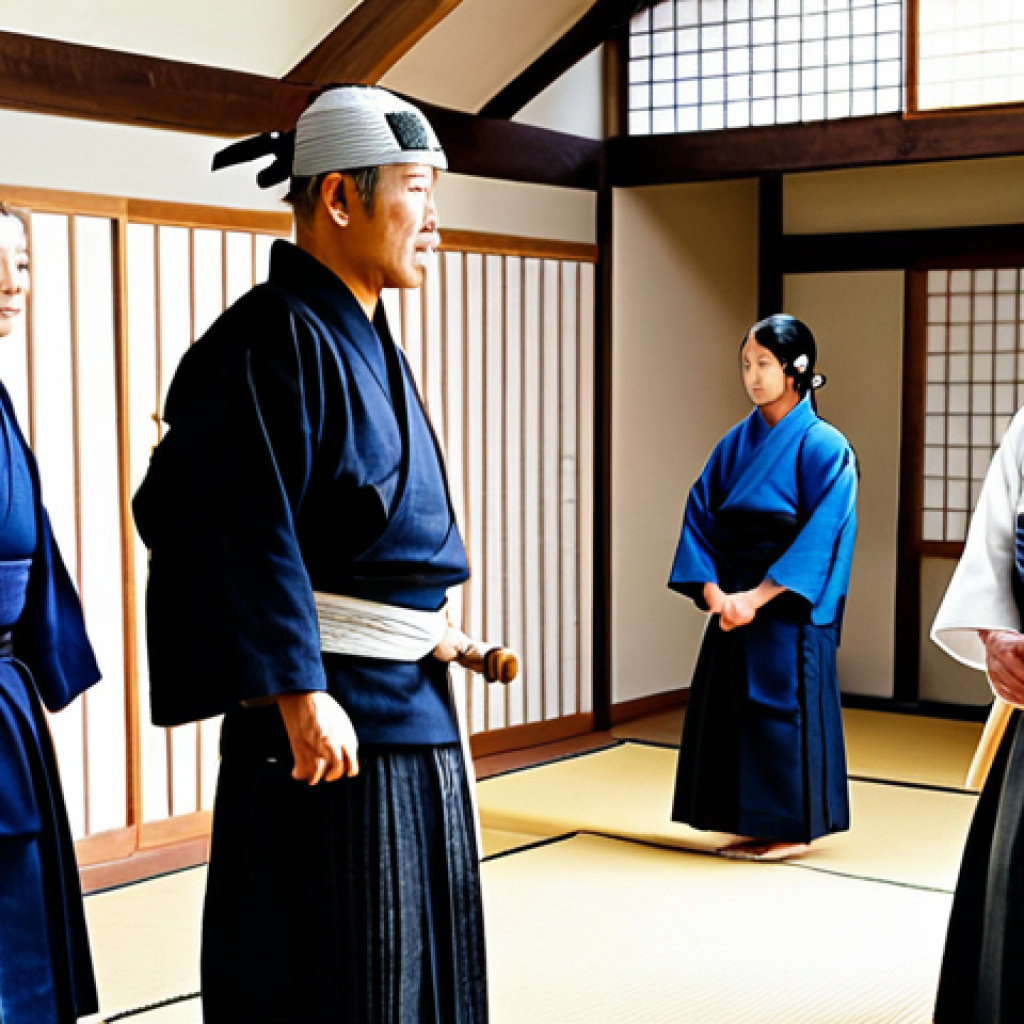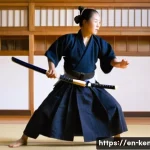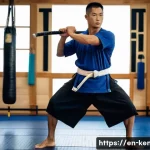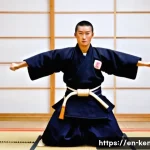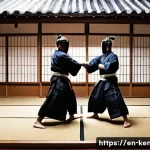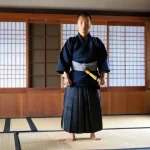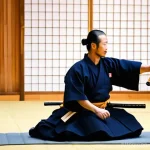Stepping onto the dojo floor, the crisp sound of shinai striking, the powerful kiai echoing – there’s a certain magic to Kendo that transcends mere sport.
It’s a journey, one I’ve personally been on for years, deeply rooted in tradition yet constantly evolving. Lately, I’ve been fascinated by how this ancient martial art is intersecting with the modern world, especially with global conversations around mental fortitude, discipline, and even innovative training methodologies.
When I first donned my bogu, I never imagined the depth of strategy and personal growth Kendo would demand. But what truly captivates me now, beyond the personal challenge, is watching how the broader Kendo community adapts to new global issues, from promoting diversity in tournaments to leveraging data-driven insights for improved performance.
The discussions I’ve encountered lately, fueled by the vast information available through modern search and analysis, highlight a vibrant future for Kendo – one where tradition and innovation dance hand-in-hand.
It’s truly exciting to see where this path leads. Let’s dive deeper below.
Cultivating Unwavering Mental Fortitude Through Kendo
When I first stepped into the dojo, I was searching for something more than just physical exercise; I was craving a challenge that would truly test my inner resolve.
Little did I know, Kendo would become one of the most profound teachers of mental resilience I’ve ever encountered. It’s not just about hitting your opponent; it’s about maintaining a clear, focused mind amidst chaos, about pushing past physical exhaustion, and about learning to control your emotions when the pressure is immense.
I’ve personally experienced moments in sparring where my body screamed to quit, but my spirit, honed by countless repetitions and the unwavering expectation of my sensei, refused to yield.
This isn’t just theory; it’s a lived experience on the dojo floor, a constant, visceral reminder that true strength often lies in the mind’s ability to overcome physical limitations and external distractions.
The discipline required to stand perfectly still, waiting for the precise moment to strike, while your opponent is actively trying to break your posture and concentration, builds a mental toughness that truly permeates every aspect of your life.
It’s a quiet, deep-seated confidence that emerges not from winning every bout, but from consistently showing up, facing discomfort, and learning from every single interaction.
Overcoming Adversity and Building Resilience
Kendo throws countless challenges your way, both physical and mental, and it’s in navigating these that you truly forge resilience. I remember one particular grading examination where my muscles were screaming after hours of continuous Keiko, but the sheer mental determination to not just survive but thrive pushed me through.
It felt like every ounce of my being was screaming for a break, yet my spirit found a deeper wellspring of energy.
- The Power of ‘Zanshin’: This concept, meaning ‘remaining mind,’ is about maintaining awareness and readiness even after an attack. For me, it translates into real-world applications of staying alert and composed long after a challenge seems to have passed, preventing complacency. It’s that feeling of knowing you’ve done your best, but still being ready for what’s next.
- Embracing Failure as Feedback: In Kendo, you ‘lose’ far more often than you ‘win’ when you’re learning. Every strike that misses, every point conceded, is a direct, immediate piece of feedback. I’ve learned to depersonalize these moments, to see them not as failures of myself, but as data points for improvement. It’s a humbling process that teaches grit and perseverance. It’s about taking the hit, literally and figuratively, and immediately analyzing how to adjust for the next encounter, which mirrors how I approach setbacks in my professional life now too.
Mindfulness and Presence in the Moment
One of the most immediate benefits I felt when I started Kendo was an acute sense of being present. When you’re facing an opponent with a Shinai, your mind simply doesn’t have the luxury to wander.
Every fiber of your being must be focused on the here and now, on anticipating, reacting, and executing. This intense focus is, in essence, a form of active meditation.
- The ‘Mushin’ State: Often translated as ‘no-mind,’ Mushin is that elusive state where your actions flow instinctively, without conscious thought or hesitation. While rarely achieved perfectly, the pursuit of it in Kendo has taught me to quiet the internal monologue, to trust my training, and to react authentically without overthinking. It’s a profound release from the analytical burden our modern lives often impose.
- Breathing and Centering: The deep, rhythmic breathing patterns taught in Kendo, particularly the kiai, aren’t just for projecting sound; they’re vital for centering yourself, managing adrenaline, and maintaining a stable core. I’ve incorporated these breathing techniques into my daily life, finding them invaluable for managing stress and maintaining focus during high-pressure situations, whether it’s before a big presentation or simply navigating a busy day.
The Evolution of Kendo Training: Bridging Tradition and Innovation
For centuries, Kendo training has relied on tried-and-true methods: repetitive striking, vigorous sparring, and the relentless pursuit of fundamental perfection.
And make no mistake, these traditional methods are the bedrock of Kendo; they’re non-negotiable and incredibly effective. But what’s fascinating now, from my vantage point within the community, is seeing how modern innovations are subtly, yet powerfully, enhancing these age-old practices without diluting their essence.
We’re not talking about replacing the bogu with VR headsets, but rather integrating tools that offer new insights, improve safety, and broaden accessibility.
I’ve personally experimented with some of these, like using slow-motion video analysis to pinpoint flaws in my form that I simply couldn’t detect in real-time, or adapting my training based on physiological feedback from wearable tech.
It’s a delicate balance, preserving the spiritual and historical depth of Kendo while embracing advancements that make our training more efficient, safer, and perhaps even more engaging for a new generation of practitioners.
The goal isn’t to revolutionize Kendo, but to optimize the learning process and prolong the active participation of its members, ensuring the art thrives well into the future.
Integrating Technology for Enhanced Performance
While Kendo is deeply traditional, the pragmatic pursuit of improvement means we’re open to tools that genuinely help. Technology, when applied thoughtfully, can be a game-changer.
I’ve seen firsthand how something as simple as a smartphone can become a powerful coaching aid.
- Video Analysis: Recording your Keiko sessions and reviewing them in slow motion is incredibly insightful. I’ve caught myself making subtle errors in footwork or posture that my sensei had pointed out repeatedly, but I only truly understood once I saw it myself on video. It’s like having an objective third eye, providing concrete evidence of areas for improvement that subjective feeling often misses.
- Wearable Technology and Biometrics: Some kendoka are starting to use heart rate monitors and even motion trackers to analyze their physical output during training. This isn’t widespread, but for dedicated athletes, understanding energy expenditure, recovery rates, and even the force of their strikes through smart sensors can provide valuable data. It’s about optimizing physical conditioning to sustain intense practice sessions and prevent injuries, ensuring longevity in the sport.
Adapting Training for Diverse Needs and Global Reach
The global spread of Kendo means we have practitioners of all ages, physical abilities, and cultural backgrounds. Traditional methods, while foundational, are being thoughtfully adapted to ensure Kendo remains accessible and engaging for everyone, everywhere.
- Online Resources and International Collaboration: The pandemic forced many dojos to go online, and while it was a challenge, it also opened up new avenues for learning. I participated in several online seminars with sensei from different countries, gaining perspectives I wouldn’t have otherwise. This kind of virtual exchange truly enriches our understanding of Kendo’s global tapestry.
- Modified Training for Longevity and Safety: As practitioners age, or for those with specific physical limitations, dojos are increasingly offering modified training sessions. This might involve less intense impact, more focus on fundamentals, or specialized warm-ups. The aim is to allow everyone to continue their Kendo journey safely and enjoyably for as long as possible, truly embodying the “lifelong path” aspect of the art.
Fostering a Resilient and Inclusive Kendo Community Worldwide
One of the most heartwarming aspects of my Kendo journey has been the incredible sense of community. From the moment I stepped into my local dojo, I was embraced, mentored, and challenged by fellow practitioners.
But this sense of belonging isn’t confined to local walls; it extends globally. I’ve had the privilege of traveling and training in dojos across continents, and no matter where I went, the shared passion for Kendo instantly dissolved any linguistic or cultural barriers.
There’s a mutual respect and understanding that underpins every interaction, from intense sparring to quiet moments of reflection after practice. What truly excites me now is seeing how this global community is actively working to become even more diverse and inclusive, consciously breaking down barriers that might have existed in the past.
It’s not just about getting more people involved; it’s about enriching the Kendo experience for everyone by embracing a wider range of voices and perspectives, ensuring the art reflects the true diversity of its global practitioners.
This commitment to inclusivity is what will truly define Kendo’s future, making it not just a martial art, but a truly universal language of discipline and respect.
Promoting Diversity and Accessibility in Kendo
For Kendo to truly thrive, it must be open to everyone, regardless of background, gender, or physical ability. I’ve seen a wonderful shift in recent years, with dojos and federations actively working to make Kendo more welcoming.
- Breaking Down Gender Barriers: Historically, some martial arts might have been perceived as male-dominated. However, Kendo has a strong history of female practitioners, and I’ve seen a growing number of women and girls confidently taking up the shinai. Tournaments now regularly feature strong women’s divisions, inspiring the next generation. It’s truly empowering to see the fierce and skilled female kendoka leading the way.
- Youth and Senior Programs: Ensuring Kendo is accessible across all age groups is vital. Many dojos now have dedicated children’s classes that focus on fun, discipline, and basic movements, instilling the values of Kendo early. Conversely, senior programs emphasize longevity and health, allowing lifelong practitioners to continue their training safely and enjoyably well into their golden years. This multi-generational participation creates a unique familial atmosphere within the dojo.
The Role of International Exchange and Collaboration
The global Kendo community is vibrant, fueled by a shared passion that transcends national borders. I’ve personally experienced the magic of training with kendoka from different countries, and these interactions are truly transformative.
- Friendship and Cultural Understanding: Participating in international seminars and competitions isn’t just about improving your Kendo; it’s about forging deep friendships and gaining profound cultural insights. I remember sharing stories and training techniques with practitioners from Europe and Asia, realizing how universal the challenges and joys of Kendo are, regardless of where you practice.
- Harmonizing Techniques and Standards: While Kendo has core principles, there are often subtle regional differences in technique or interpretation. International exchanges help to harmonize these, fostering a deeper, shared understanding of ideal Kendo. This collaborative spirit ensures that the art evolves cohesively, maintaining its integrity while embracing subtle variations.
Kendo’s Profound Impact on Daily Discipline and Holistic Well-being
Beyond the fierce battles and intense training, Kendo has, for me, become an unexpected blueprint for living a more disciplined and fulfilling life. It’s not just an activity I do a few times a week; it’s a philosophy that subtly, yet profoundly, reshapes my daily habits, my approach to challenges, and even my understanding of self-care.
The relentless pursuit of perfection in Kendo, the focus on minutiae, and the emphasis on respect and etiquette, bleed into everything I do. I’ve found myself applying the ‘one strike, one life’ mentality to deadlines at work, striving for maximum efficiency and precision.
The sheer physical demands of Kendo, coupled with its mental rigor, naturally nudge you towards a healthier lifestyle. You instinctively start paying more attention to what you eat, how you sleep, and how you manage stress, because your performance in the dojo directly reflects your overall well-being.
It’s a holistic transformation that few other activities have offered me, turning abstract concepts like ‘discipline’ and ‘focus’ into tangible, lived realities that genuinely improve my quality of life.
The consistent, demanding nature of Kendo inherently cultivates habits that support overall physical and mental health, making it much more than just a sport.
Building Consistent Habits and Personal Responsibility
The structure of Kendo training inherently fosters powerful habits and a deep sense of personal responsibility. I’ve learned that consistency truly is the key to progress, and that excuses simply don’t exist in the dojo.
- The Power of Repetition (Kihon): Thousands of repetitions of basic strikes and footwork might seem monotonous, but this ‘kihon’ practice builds muscle memory and an unwavering foundation. This principle has taught me the importance of consistent, deliberate practice in any field, whether it’s learning a new skill or maintaining a healthy routine. It’s about showing up, even when you don’t feel like it, and trusting the process.
- Self-Correction and Accountability: In Kendo, you are your own primary critic. While sensei provide guidance, the onus is on you to constantly analyze your own form, strategy, and mental state. I’ve become much better at objective self-assessment, identifying my weaknesses, and taking proactive steps to correct them, rather than waiting for external validation or blame. This level of accountability translates directly into stronger personal and professional ethics.
Physical and Mental Health Benefits Beyond the Dojo
While the physical exertion of Kendo is obvious, its contribution to mental health and overall well-being is often understated but equally profound. The practice offers a unique blend of high-intensity cardio, strength training, and profound meditative focus.
| Benefit Category | Specific Kendo Impact | Real-World Application / Anecdote |
|---|---|---|
| Physical Fitness | Full-body workout, improved agility, endurance, core strength. | I’ve noticed a significant increase in my overall stamina and coordination, making everyday tasks feel less strenuous. My posture has also visibly improved. |
| Mental Clarity & Focus | Sharpens concentration, reduces mental clutter, teaches quick decision-making. | During busy workdays, I find myself able to block out distractions and focus on critical tasks with a laser-like intensity, a direct result of Kendo’s demand for presence. |
| Stress Reduction | Physical exertion as an outlet, meditative aspects of practice. | Stepping into the dojo is my ultimate stress reliever. The physical intensity and mental focus leave no room for external worries, providing a complete mental reset. |
| Emotional Regulation | Teaches control over anger, fear, frustration under pressure. | I’ve learned to manage my emotions better, particularly frustration, both on and off the dojo floor. It’s about responding thoughtfully rather than reacting impulsively. |
Navigating the Future of Kendo: Balancing Authenticity and Accessibility
The path forward for Kendo is an intriguing one, constantly requiring a thoughtful dance between preserving its ancient roots and ensuring its relevance and accessibility in a rapidly changing world.
As someone deeply invested in its future, I often ponder how we can introduce Kendo to new generations without diluting the profound spiritual and physical lessons it offers.
It’s a challenge to explain the beauty of its strict etiquette and often grueling training to a world that increasingly favors instant gratification. Yet, I firmly believe that Kendo’s unique appeal lies precisely in its demanding nature and deep traditions.
The question isn’t whether to change Kendo, but how to present its enduring value in a way that resonates with contemporary society, drawing people in to experience its transformative power firsthand.
This means a continuous conversation within the global Kendo community about how we teach, how we organize, and how we communicate the essence of this incredible art, ensuring it remains vibrant and impactful for centuries to come, without ever compromising its authentic soul.
My personal hope is that we can continue to bridge this gap, inviting more people to discover the profound richness that lies within the seemingly rigid structures of Kendo.
Preserving Core Values Amidst Modernization
The heart of Kendo lies in its philosophy and traditional training methods. Any steps towards modernization must be taken with utmost care to ensure these core values remain intact.
- The Spirit of ‘Budo’: Kendo is fundamentally a Budo, a martial ‘way’ or ‘path,’ not just a sport. This means it emphasizes character development, respect, courage, and self-discipline above mere victory. It’s crucial that as Kendo grows, these ethical dimensions continue to be paramount in teaching and practice. I’ve seen some attempts to over-sportify it, and it feels like a disservice to the very essence of what makes Kendo so special and impactful.
- The Role of Etiquette and Reiho: The intricate system of etiquette (‘Reiho’) in Kendo, from bowing to how you handle your equipment, might seem rigid to outsiders. But for practitioners like me, it’s the very fabric that weaves respect, humility, and mindfulness into every moment of training. It’s the invisible glue that holds the community together and instills profound lessons that extend far beyond the dojo, fostering a sense of discipline that I apply to all my interactions.
Expanding Kendo’s Reach and Appeal
While preserving tradition is key, it’s equally important to consider how Kendo can attract new practitioners and thrive in diverse cultural contexts, making it relevant for a broader audience.
- Engaging Through Storytelling and Experience: Instead of just explaining rules or techniques, sharing personal narratives about Kendo’s transformative power can be incredibly compelling. When I talk about my own experiences, the mental fortitude it builds, the community it fosters, people often become genuinely curious. It’s about conveying the depth and richness of the journey, rather than just the superficial aspects of the sport.
- Innovative Outreach and Educational Programs: Introducing Kendo through workshops, school programs, or even online demonstrations can spark initial interest. These initiatives can provide a gentle introduction to the art, highlighting its benefits for mental health, physical fitness, and character development, hopefully inspiring more individuals to step onto the dojo floor and begin their own profound journey. It’s about lowering the barrier to entry while maintaining the high standards once someone commits.
Closing Thoughts
As I reflect on my journey through Kendo, it’s clear this martial art offers far more than just physical training. It’s a profound path to cultivating unwavering mental fortitude, embracing consistent discipline, and finding a deep sense of belonging within a global community.
My experiences have taught me that true strength isn’t just about the power of your strike, but the resilience of your spirit and the clarity of your mind.
Kendo has fundamentally reshaped my perspective on challenges, fostering a quiet confidence that permeates every aspect of my life. It’s a timeless art that continues to evolve, yet always remains anchored to its core values, inviting anyone willing to commit to embark on a truly transformative journey.
Useful Information
1. Finding a Dojo: Start by searching online for “Kendo dojo near me” or visiting your national Kendo federation’s website (e.g., All United States Kendo Federation, British Kendo Association). They often have lists of affiliated dojos and contact information.
2. First Steps & Equipment: Most dojos offer introductory classes or observation opportunities. You’ll typically start with basic movements and etiquette, often without needing full armor (bogu) immediately. A simple wooden sword (bokken) or bamboo sword (shinai) might be provided or recommended for early practice.
3. Physical Preparation: Kendo is physically demanding, so general fitness, including cardio and core strength, will be beneficial. However, consistent practice within the dojo naturally builds the specific physical attributes required. Don’t feel you need to be an elite athlete to start.
4. Embrace the Discipline: Kendo emphasizes discipline, respect, and perseverance. Be prepared for repetitive drills and strict etiquette. These elements are crucial for character development and understanding the true essence of the art.
5. It’s a Lifelong Journey: Kendo is often referred to as a “lifelong path” (Shogai Kendo). It offers continuous learning and growth, suitable for all ages and adaptable as you progress through different stages of life. Many practitioners continue well into their senior years.
Key Takeaways
Kendo is a transformative martial art that goes beyond physical combat, fostering profound mental fortitude, discipline, and emotional regulation. Through its rigorous training and philosophical foundations, it cultivates resilience, presence, and a deep sense of personal responsibility.
The global Kendo community thrives on shared values of respect and continuous improvement, embracing a balance between preserving rich traditions and adopting innovations to ensure accessibility and longevity.
Its impact extends into daily life, promoting holistic well-being and shaping a disciplined, focused approach to all challenges.
Frequently Asked Questions (FAQ) 📖
Q: You mentioned Kendo’s deep roots in tradition but also its constant evolution. How does an ancient martial art like Kendo truly stay relevant and captivating for someone living in our modern, tech-driven world?
A: Oh, that’s such a good question, and honestly, it’s what keeps me hooked! When I first started, I thought it would just be about hitting targets. Boy, was I wrong!
Kendo’s core principles – like respect, perseverance, and that razor-sharp focus – they’re absolutely timeless. In a world where we’re constantly bombarded with distractions, stepping onto the dojo floor and just being there with your mind, body, and spirit all aligned, it’s like a mental reset button.
And the “evolution” part? It’s not about changing the fundamental techniques, but how we apply those principles and how the community adapts. We’re talking about dojos using online platforms for strategy discussions, or even exploring sports psychology for mental edge.
It’s all about leveraging modern tools to deepen an ancient practice, not replace it. It’s a beautiful balance, truly.
Q: You talked about never imagining the depth of personal growth Kendo would demand. Can you share a specific instance or a feeling you’ve had that really cemented Kendo’s impact on your personal development, beyond just the physical aspects?
A: Absolutely. There’s this one moment that still gives me goosebumps when I think about it. It wasn’t during a big tournament, but in a regular practice session, a keiko, with a sensei known for being incredibly tough.
I was exhausted, mentally fried, and felt like I just couldn’t land a single effective strike. My mind was racing with self-doubt. Then, mid-exchange, something just clicked.
It wasn’t about the force of the strike, but the intention behind it, the commitment. I took a breath, cleared my head, and suddenly felt this incredible surge of calm focus.
I landed a clean strike, not because I hit harder, but because my mind was finally there. That moment taught me more about managing stress and maintaining composure under pressure than any seminar or book ever could.
It wasn’t just Kendo; it was a life lesson wrapped in a bamboo sword. I walked out of that dojo feeling like I could tackle anything.
Q: You mentioned the Kendo community adapting to new global issues, like promoting diversity and leveraging data. Can you give us a more concrete example of this ‘tradition and innovation dancing hand-in-hand’ that you find particularly exciting or impactful?
A: Oh, absolutely! One thing that’s really gotten me excited lately is how the community is embracing data analytics for competitive performance – sounds wild for Kendo, right?
I mean, we’re talking about an art form steeped in centuries-old principles. But picture this: some top dojos are now using subtle sensor tech in shinai or bogu, not to replace human judgment, but to give practitioners objective feedback on things like strike velocity, angle consistency, or footwork efficiency.
I even saw a demo recently where a Kendo-ka could review their kiai loudness and pitch against optimal ranges! It’s not about making Kendo robotic, but using data to refine an individual’s technique and strategy in ways our eyes alone can’t quite capture.
It’s truly revolutionary, helping us understand our own bodies and movements better within the traditional framework. It takes the guesswork out of some aspects of training, allowing us to focus even more deeply on the mental and spiritual growth that’s so crucial.
It’s like, we’re honoring the past by making sure we’re at our best for the future.
📚 References
Wikipedia Encyclopedia
구글 검색 결과
구글 검색 결과
구글 검색 결과
구글 검색 결과
구글 검색 결과
